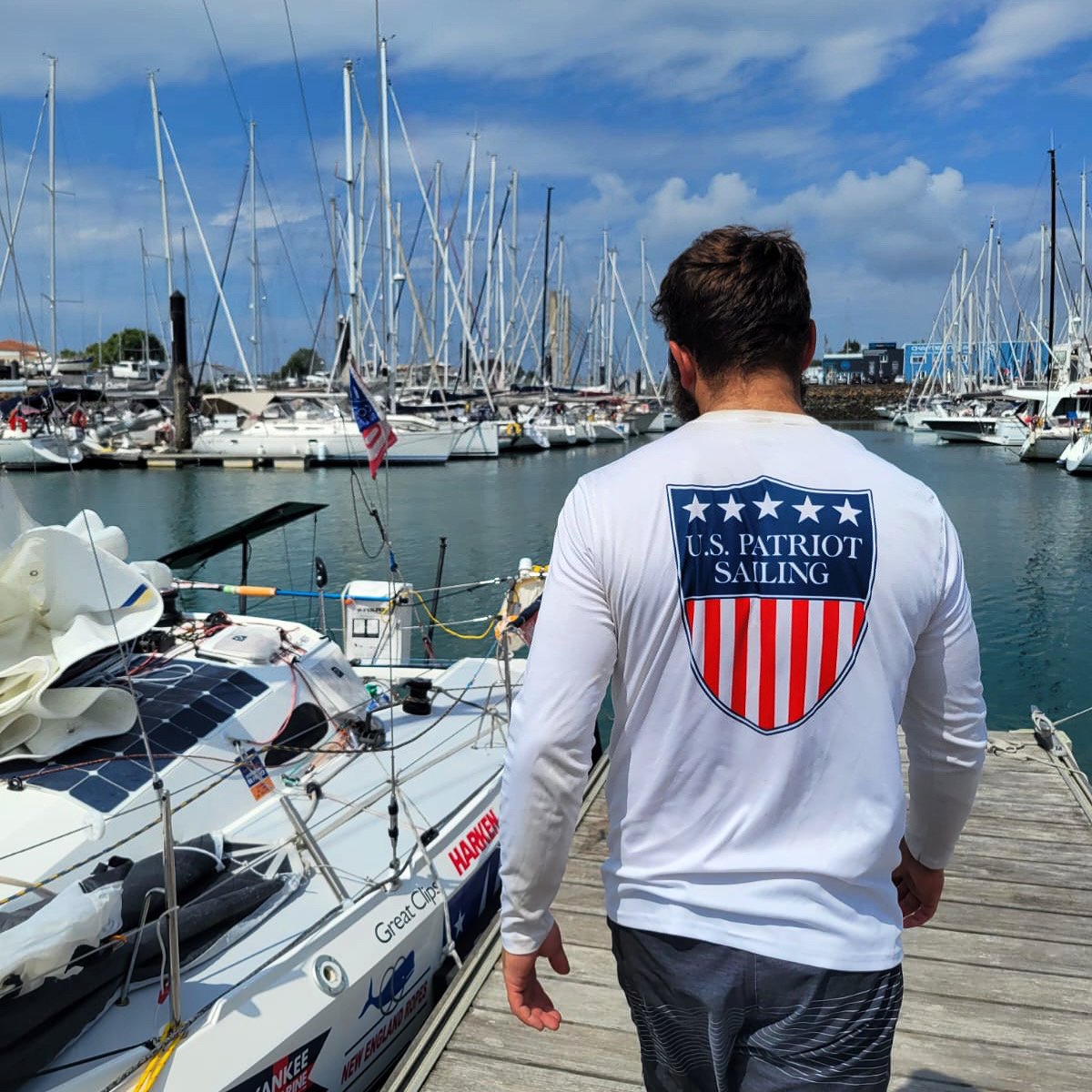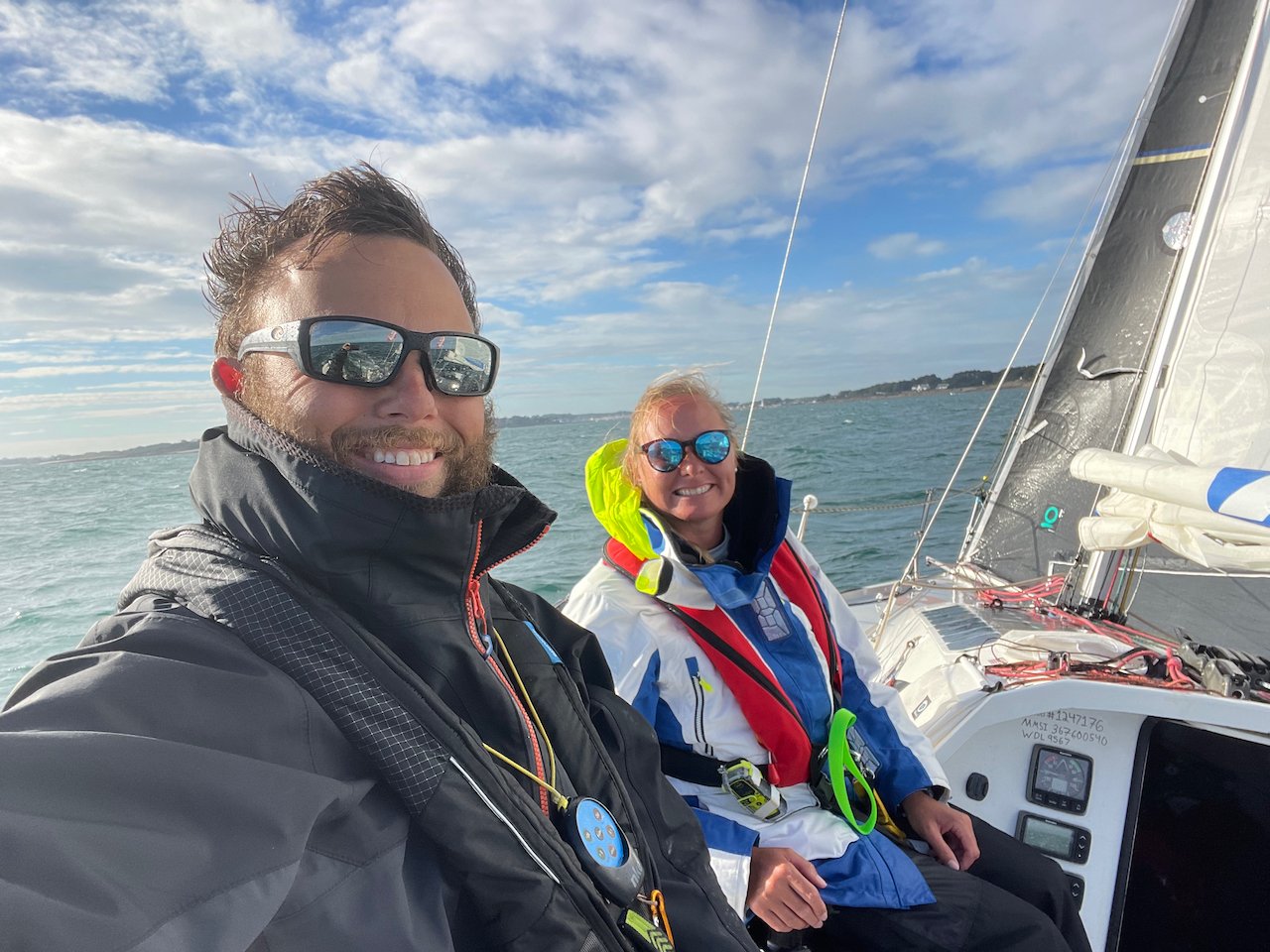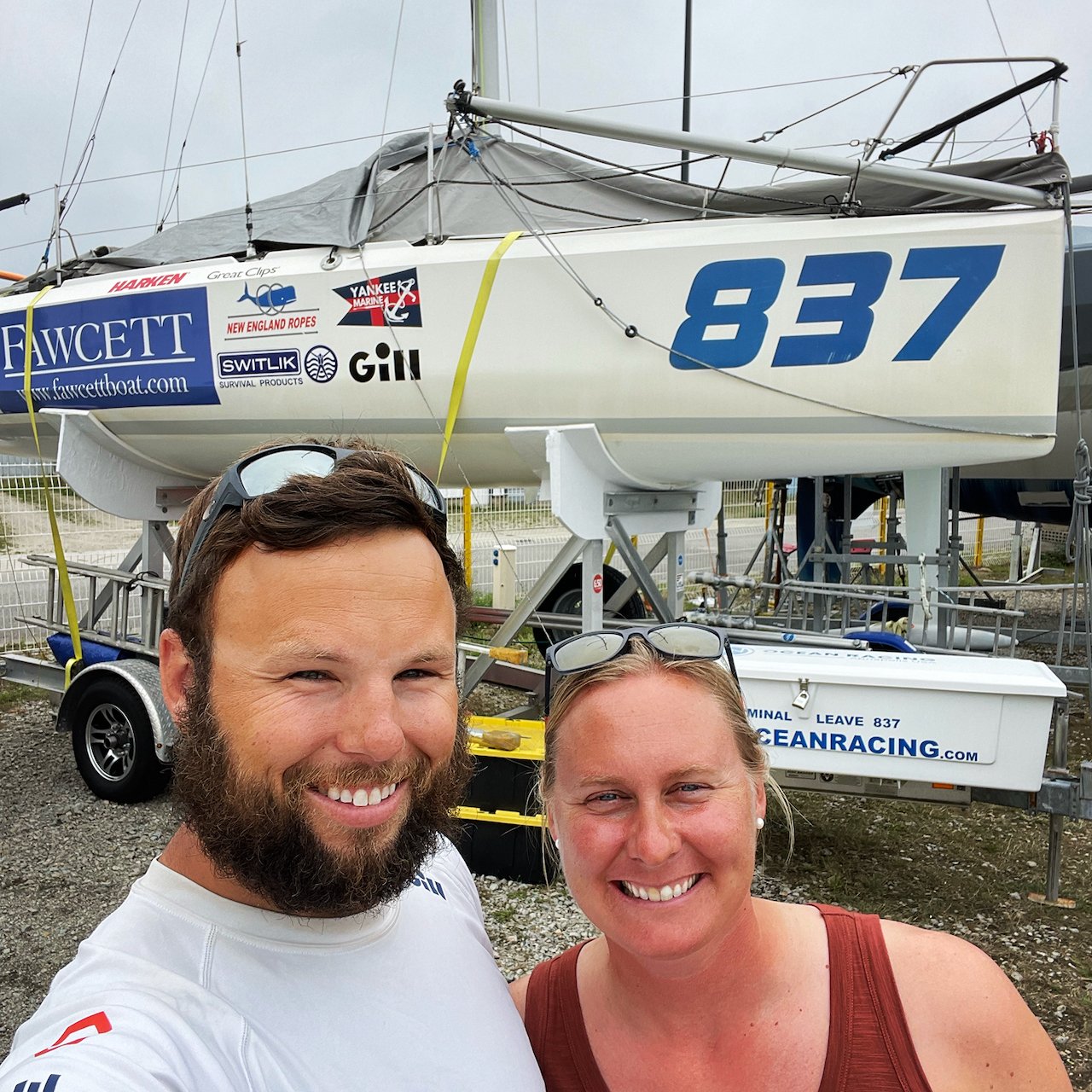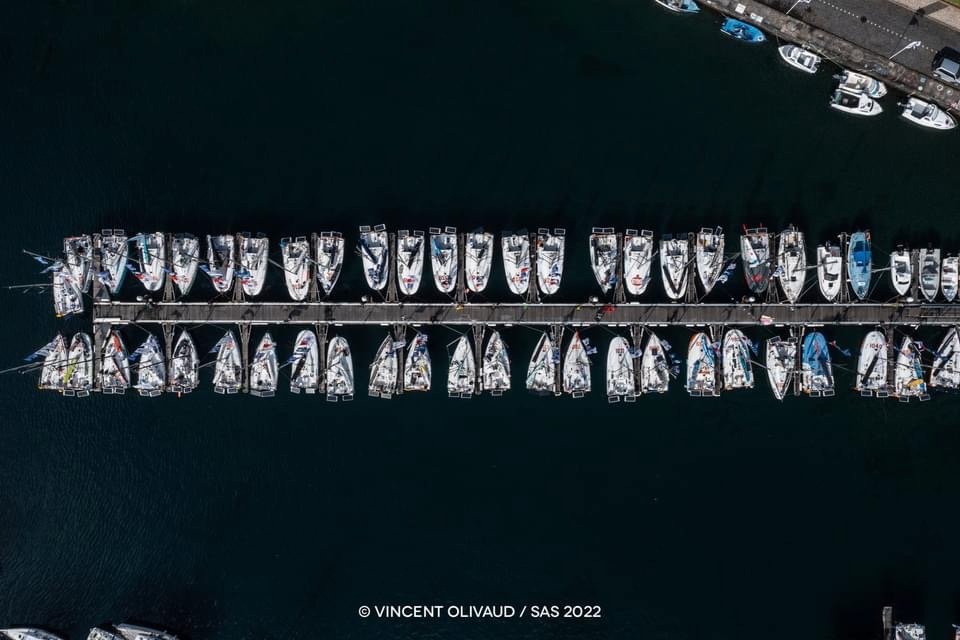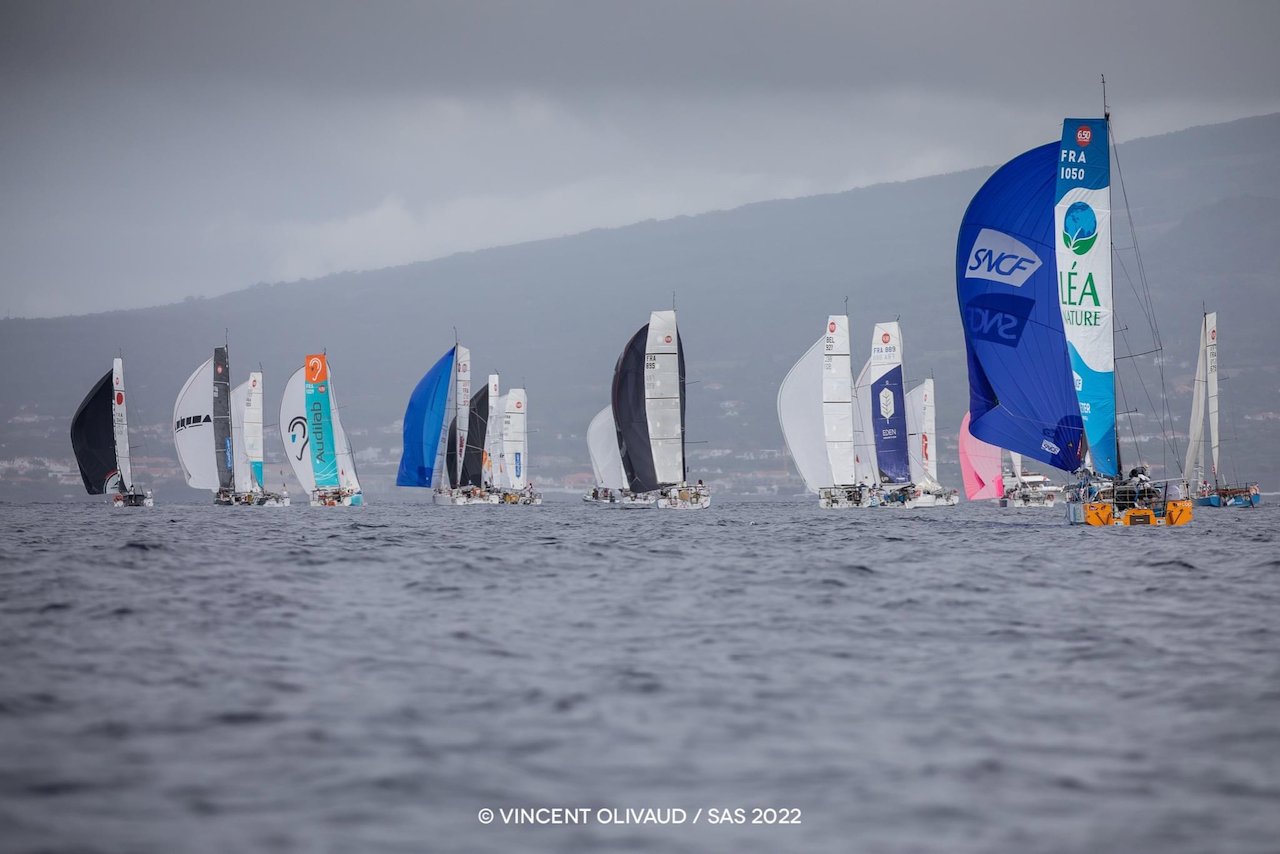August SITREP
Finished the SAS and a quick retrograde
At 1257 local time on 16 August I crossed the finish line and completed the second half of the Les Sables-Azores-Les Sables race. This final 1,300 nm return race from Horta in the Azores to Les Sables d’Olonne, France took 11 days, 18 hours, and 57 minutes. This race tested both the boat and myself far more than I could have ever imagined. While I always plan for worst case scenarios, the actual execution of each race varies significantly with unexpected challenges.
With meeting the qualification requirements for the Mini Transat earlier this season, we feel more than ready to take on this major race next year.
Going into this race, I had accumulated over 6,000 nm of sailing on Terminal Leave. I was confident in the boat and focused on some recent navigational lessons learned as I prepared for the final race of the season. There was only about 3.5 days between these back to back legs, it was a quick turnaround for the body to recover and clean the boat from the previous 12 days at sea.
Both legs of this race will be covered in greater detail in future blog posts and presentations; incorporating different videos I took during the races and decision points along the way. Until then, below are the highlights:
Start of the second leg of the SAS off Horta (Photo: Vincent Olivaud)
The race started on the afternoon of 4 August at 1600. The light air, downwind start with current trying to push us over the line early made for a challenging first afternoon. I started off on the middle/right side of the starting line and had room to jibe, attempting to stay in the pressure.
That first night was light with the wind completely dropping to nothing at times. As the wind slowly returned and rotated the next morning, it turned into a reach with the Code 0. Everyone was headed north trying to get away from the Azores as fast as possible into new wind.
The key factor to this race was how far north do you go before heading east? For the first half of the race, every boat was north of the rhumb line between the Azores and France.
500 nm of lateral separation across the fleet
The main decision was between sailing a shorter distance upwind closer to rhumb line or a much longer distance north but with considerably more downwind sailing. A big unknown was the exact location and duration of the no wind area diagonally across the course.
I chose the “southern” route (still north of rhumb line) which meant I was beating into the wind for over a week straight but was making decent speed towards the finish line. The first time I tacked from starboard onto port was on day 5.
The worst part of this decision, however, was the lack of direct sunlight for the solar panels to charge my batteries. There was over a week of endless cloudy days.
By day 7 both of my batteries were drained. Keep in mind these were new lithium batteries, so they were able to provide power much longer than my AGM batteries, but when the charge drops low enough, the internal battery management system (BMS) kicks in to shut everything down before they are damaged. To put this into perspective, I had about 650nm left of the race and I remember thinking to myself how crazy it would be to start a Newport-Bermuda race solo without any power. This is why solo racing in Minis requires problem solving and mental endurance to get through situations like this.
In addition to cloudy skies, after days of beating upwind in challenging seas, one of the aft solar panels broke off of the support pole on deck. I was able to recover the panel, but the electrical wires had pulled out of their connection point. Once the seas had calmed a few days later, my attempt to repair this delicate electrical connection would not hold to support charging the batteries.
For most of the race I only saw one other boat or was completely alone. I assumed I was one of the more southern boats based off the daily audio weather briefings by the race organization over the SSB radio receiver, but didn’t know much more than that. Also, the rankings would switch significantly each day, so I could partially tell which part of the race course was playing out.
During this time, when there was more sunlight I could charge the batteries slightly. However, usually I only had enough power to use the autopilot during the weather broadcast hour and for a few key naps.
Finally on day 9, the wind direction rotated and I was able to hoist the spinnaker for three days, really covering some miles.
Final stage of the race and challenging final push to the finish:
The night of day 11 and into the morning I was exhausted driving non-stop with the spinnaker up. Playing frogger with large ships passing between Cape Finisterre off Spain and the English Channel kept me mostly alert, especially since I did not have enough power for my VHF/AIS transponder (I relied on two handheld VHFs to communicate with ships when in visual range). It was not uncommon to have three large ships approaching from port while simultaneously having another three ships approach from starboard.
Day 12 was one of the best days of downwind sailing on the boat. Once the sun rose I forgot just how tired I really was. Despite not having any power and driving off a handheld GPS, the wind was a steady 20 kts with the perfect wave height and period. Instead of plowing the bow into the next wave, Terminal Leave was able to catch and surf multiple wave trains in a row. Averaging double digit speeds and breaking 15 kts felt incredible.
That night however, was the second night in a row of no autopilot. In the previous nights, I had just enough power to keep my masthead and compass lights on, but on this night, the batteries were completely dead. Being in close proximity to shore and fishing boats, I had to shine a flashlight on the mainsail that entire night to make my presence known.
Late that final evening I made a calculated but difficult decision. I could not keep my eyes open and had an extremely difficult time keeping the boat on course. I woke up a few times to crash jibes/tacks. For the first time ever in a race, I went “heave-to” and took the best 3 hour nap of my life to recharge my body. Since there were not any Minis close by in the rankings, I figured I would not lose many places and it out weighed hurting myself, breaking the boat, or making any worse decisions at the time. The last thing I needed was to fall overboard or have a race ending breakdown just 50 nm from the finish.
After that long (and much needed) nap, I continued to take multiple 10 minute naps. Since I still did not have power, we could not sail as close to the wind as I wanted and sailed farther east instead of northeast.
Unfortunately, that morning the wind got light and shifty with isolated thunderstorms popping up along the coast. The final 30 nm felt like they took forever, but eventually the wind filled in and I could fly the A2 spinnaker and then the code 0.
As the wind continued to shift, I hoisted the A3 spinnaker for the final 3 nm of the race. Approaching Les Sables d’Olonne under the U.S. Patriot Sailing shield felt incredible as a way to honor and represent the team. At 1257 on 16 August, I crossed the finish line in 41st place out of 60 series boats.
More pictures at the bottom of this blog post!
The main reason for not sending out this SITREP sooner is because since the finish it has been a whirlwind of an experience. The following day after finishing the SAS, we departed Les Sables to head 85 nm back up to La Trinité-sur-Mer. The race took much longer than expected or planned initially in the notice of race. Luckily Jane was there to help with the post-race clean up and delivery prep, but I was still exhausted and nowhere close to recovered. We considered delaying the overnight delivery by a day, but the weather forecast continued to deteriorate.
On the evening of 17 August, Jane and I departed Les Sable d’Olonne for the 85 nm sail northwest. The wind was against us the entire way which made for a long evening. Furthermore, the next day the wind was gusting over 25 kts still on the nose. With a double reef in the main, we eventually made it back to La Trinité-sur-Mer just before sunset.
We only spent 4 nights in town, but during that time we accomplished a ton of work that is required to properly put the boat away for the winter. First, we had to found a van to rent with the necessary trailer hitch (an increasingly challenging find in the area) to tow the trailer. We cleaned up the boat down below and washed the deck, rigging, and sails. Hauling the boat out with the hoist and driving the boat down the street to the storage lot is always a bit stressful. Finally, we organized all of the sailing equipment, parts, tools, and sails. Terminal Leave is all packed up and put away this season. Big thank you to Jane for helping so much both with the initial set up this season, and for putting the boat away for winter again.
This season is only made possible through support from my sponsors and generous donations from supporters who believe in this mission. So far we have raised over $24,000 this year through the GoFundMe page. These contributions have helped make this season a reality, however I still need your help! Looking forward to next season, there are large expenses that are needed for a successful race. Preparing to race a 21’ boat solo in the upcoming Mini Transat requires resources for boat preparations, logistics, and the race. Race costs add up fast for such a serious offshore competition. Please share my GoFundMe page with your friends and family! https://gofund.me/dc565273
Thank you for your support!
Following the end of season boat work, we took a detour on the way to Paris and stopped at a few places quickly by car. We finally were able to visit Normandy to include Omaha Beach and Pointe du Hoc from the WWII D-Day invasion. Last summer I raced by a mark off Sword Beach (farthest east landing site), but finally was able to see and learn more about this historic area. Simply breathtaking and no words can accurately describe this experience, so I will leave you with some pictures below.
Normandy American Cemetery, Omaha Beach, and Pointe du Hoc







